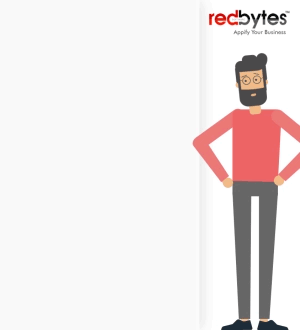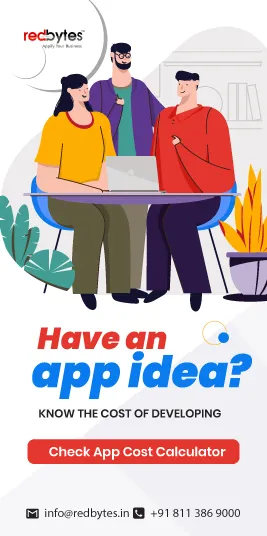If you are looking for university-level online programs, edX is bound to pop up in your internet search results.
edX is a cutting-edge online learning and education app developed by some of the best brains from MIT and Harward University. The application hosts 2500+ online courses ranging across subjects like web development, computer science, and programming, business, design, etc.
These certificate programs are offered by some of the top-ranked universities and industry-leading companies in the world and taught by experts from the best institutions, globally.
The app is a student’s private classroom that helps him or her to gain knowledge, learn new skills and earn a certification that is recognized worldwide.
The app was initially launched in 2012 and more than a year later it has over a million users already. The goal for edX is to become the leading Massive Open Online Courses or MOOC in the world.
Trends & Statistics
The e-Learning market is expected to reach $ 325 billion by 2025, according to Forbes. With such potential, it is not surprising that so many edu start-ups are entering the market with a lot of unique concepts, capabilities, and offerings.

But having a billion-dollar idea is not enough in this competitive environment. Apart from your brilliant idea you also need a dependable platform to transform the project into something like edX.
So how do you create an app like edX which will achieve guaranteed success? You have to list down the must-have features and models. Other than that, what you also need to know is how much will it cost to create an edX app?
Read Also: Top 10 Kids Learning Apps UK 2020
Steps to Create an App Like edX

It is not an easy job to create an app like edX. To begin with, you must be able to identify what your requirements are. Next, you need to list down the essential features that will make your app stand out amongst your competition.
Follow these recommended steps:
Develop a Mind Map: The primary component of the e-learning app is its user experience. When you start developing the app, you should conceptualize the interface from your user perspective. There should be a fine line where you can blend them with your business successfully.
Through a graphical representation of the mind map, you can chalk out the categories, features and their relevant functions. Think of actions and their corresponding reactions to these features and functions. Take into account the business model and all technical requirements needed to build the application.
Wireframes for a Better Vision: Wireframes represent the layout of the website using graphical diagrams. You can also call it the blueprint of the website that portrays every individual element. The function of the wireframe is to ensure that the development team and client have a clear vision of the project and what the app’s features and potential are.
User-intuitive UI Design: Make sure that your UI and UX are user-friendly and intuitive as that is the first point of interaction between the business and the customer. If that fails to impress, the user, in probability will not be coming back to the application in the future.
Testing for Constructive Feedback: Share your app’s blueprint with a few users and see if the e-learning application has any real impact. Getting their recommendations is useful as making changes in the planning stage is easy.
Before making the app live, you need to ascertain that your application is functioning as per expectation. The best way forward is to share the beta version with some real users who are a part of your target audience. Get some honest feedback of them and use to it improve your app’s efficiency.
Custom-Made Platform or Customize an Open-Source Platform: There are two approaches for your e-learning application. You can either opt for a custom-designed platform or go for an open-source one.
Find the Team: While you are in your planning stage, you also need to hire the relevant team to develop an application for you. You can start interviewing reliable vendors or go for freelancers.
Decide on Your Technology Stack: For an e-learning application, you need an advanced technology stack, very similar to edX.
Here is what we recommend:
- Language: JavaScript, Python, PHP, Scala
- Web Server: Nginx
- Storage: Amazon S3
- Database: MySQL, Amazon Relational Database Service
- Search: Elastic Search, Amazon CloudSearch
Essential Features of the App

Now that you have decided to enter the education space, you should initially concentrate on the core offerings of your e-learning app. Ideally, the app should offer one or more of these benefits:
- Have a lot of useful educational content that offers learning experiences
- Ensure that the student – app interactions are bug-free and seamless
- Learners should be able to monitor and track their progress in real-time
Once you have your core capabilities in place, you must make a list of your essential app features.
Take a quick look at the MVP features of an e-learning platform:
Registration: Every single user, be it student or teacher must go through a process of authentication. This can be done by using their unique email id or phone number, plus a password. Another way of doing it is by using popular social networking sites like Facebook and Google.
Profile Management: The features under Profile Management will depend on the type of profile being created. In this case, a student or a teacher. Having said that, some features and details are common to both such as:
- User info and profile pic
- List of active and/or completed courses
- Information about certificates/points/credits
- Purchase history
- Settings page
In addition to the above, the teacher’s profile should have:
- Info page (with information about degree or establishment they represent)
- List of added courses
Search Filters: In an app like edX that contains 2000+ courses, there must be a filter that can help users search for their preferred program. This can be in the form of a search bar that is keyword enabled. Alternatively, it can also be done using categories on the main interface of the app. Users can also use the filter function and check by level, price, language, rates, and so on.
Dashboard: For any e-learning app both students and teachers must be able to monitor their progress online. All of this can be done through a unified dashboard.
The insights generated such as their completion status, the number of hours they’ve spent on a course, etc. are extremely useful for students to move forward with their chosen program. Teachers, on the other hand, can keep a track of the courses added to their profiles, the number of enrolled students, traffic, ratings, earnings, and more.
Course Page: How will you make your course page stand out on the application? Make sure that it carries the course description, information on the program creators, list of topics and materials followed by a review section.
You must build in the architecture to include videos, recordings, podcasts, chats, and interactive textbooks. You can go one step further and incorporate elements of gamification which can help in engaging students too.
The final step should be an automatic certificate generation upon course completion. If automation is not possible, the administrators can manually do it.

Payment Methods: If you are going to develop your e-learning platform on a paid model, which means that your courses have a fee attached to them, then you have to have a payment gateway integrated with the application too. The process should be seamless, meaning, students should not face too many challenges in making a payment and teachers should be able to conveniently collect their earnings.
Popular methods that can be offered are net banking, debit and credit cards, GPay and other third party gateways. Remember that when you are dealing with money, you must ensure that your application abides by all financial guidelines and security measures relevant to monetary transactions.
Course-Making & Editing Page: When you develop your e-learning application, the architecture should be able to accommodate more programs and courses in the future. The probability of the course numbers increasing is way higher than them going down.
Hence, you will need the necessary tools to create courses, edit program structure, add materials, content, exercises, links and any other relevant resources such as audio files, videos, and PDFs.
Notifications & Reminders: No app is complete without a system of reminders and notifications. With this feature, you can ensure that your users are always well informed about new courses, program updates, reviews, and recommendations, any upcoming events. The notification system alerts the user on any pending app updates.
Admin Panel: Minus an admin panel, your e-learning app will never work successfully. All the content is managed by the administrators via the admin panel. They can additionally make edits or delete programs, check insights, generate reports, manage notifications and circulate emailers through the admin panel.
How Much Does it Cost to Create an App like edX?

The most important aspect of any app development is budgeting. If you do not have the funds, then your edX like the app is going to be a dream.
So, what is the cost to create an app like edX?
For an e-learning application like edX, with the must-have features already discussed, the development cost will be anywhere between $54,750 and $62,500.
This is based on the assessment that the development team will be based in Eastern Europe such as Ukraine and will work at an hourly rate of $50. The project should take approximately 1,095 hours to 1250 hours from conception to launch.
However, if you choose to build a fully custom-designed platform, then it will cost you some serious money, effort and time. You will also need a team of experienced and efficient software developers to create the application.
Either way, accurate pricing can also be arrived at once you have decided on your application requirements. Also, the development team’s country of residence will make a difference to the overall expenditures.
Here is a rough assessment:
- Eastern Europe. $54,750 and $62,500 (based on $50/h)
- Central and Western Europe. $109,500-$125,000 (based on $100/h)
- The USA. $164,250-$187,500 (based on $150/h)
- $109,500-$125,000 (based on $100/h)
The more complex your platform becomes, the more development time and money it is going to take to make it live on the app stores.
Read Also: How to Reduce the App Development Cost ?
Closing Thoughts
Reports show that the corporate online learning industry grew by 900% between 2001 to 2017. And in terms of environment, e-learning is certainly a more sustainable alternative to traditional classroom-style education.
No doubt, online learning is the future with benefits galore.

So, if you are considering creating an app like edX, there is no better time than now for educationist start-ups or entrepreneurs to build their e-learning app to earn serious money.
All you need now is the right idea that brings a solution to a learning problem, backed by a solid business model, and the support of an experienced team of developers.














